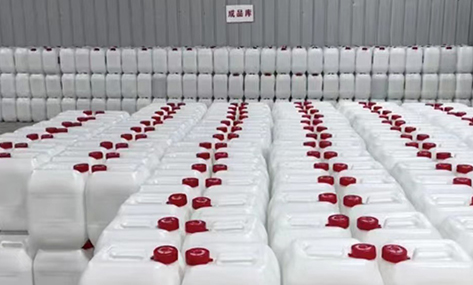
Dec . 15, 2024 11:07 Back to list
glacial acetic acid melting point
Understanding the Melting Point of Glacial Acetic Acid
Glacial acetic acid, a colorless liquid with a pungent smell, is a key organic compound that has garnered significant attention in both industrial and laboratory settings. Known for its use as a solvent, reagent, and food additive, glacial acetic acid is synonymous with purity, often reaching concentrations of 99% and above. One of the fundamental physical properties of glacial acetic acid is its melting point, which is a critical factor in its application and handling.
What is Glacial Acetic Acid?
Glacial acetic acid is essentially pure acetic acid, distinguished from its aqueous solution known as vinegar (which contains about 5-20% acetic acid). The term 'glacial' refers to its ability to solidify below approximately 16.6 °C (62 °F). When cooled, glacial acetic acid forms crystalline structures, which gives it a distinctive solid form that resembles ice—hence the term glacial. This property is significant because it helps in identifying the purity of the acid; impurities generally lower the melting point of the substance.
Melting Point of Glacial Acetic Acid
The melting point of glacial acetic acid is approximately 16.6 °C (62 °F). This relatively low melting temperature means that glacial acetic acid can easily transition from solid to liquid state at typical room temperatures. For applications requiring the use of glacial acetic acid, understanding this melting point is crucial as it informs storage, transportation, and usage protocols.
Importance of the Melting Point
The melting point of glacial acetic acid is not just a trivial detail; it plays a vital role in both practical applications and theoretical considerations. When glacial acetic acid is stored or used in environments where temperatures drop near its melting point, one must ensure that it remains in its liquid form to maintain its usability and avoid crystallization. The melting point also has implications for both safety and handling. At temperatures below its melting point, glacial acetic acid can pose risks, as solid acetic acid can lead to thermal shock and handle difficulties during dissolution.
glacial acetic acid melting point

Applications
In the industrial realm, glacial acetic acid is utilized in the production of various chemicals, including acetate esters, which are important solvents in inks, coatings, and adhesives. Its melting point facilitates easy processing in chemical reactions, making it a preferred solvent. Additionally, in the food industry, despite the risks associated with high concentrations, glacial acetic acid can be used as a food preservative and flavoring agent when properly diluted.
Moreover, glacial acetic acid serves as a vital reagent in organic synthesis, where its melting point allows for precise manipulation during chemical reactions. In laboratories, it is often used in titrations and as a standard for acid-base reactions due to its known properties and consistent purity levels.
Handling and Safety
When working with glacial acetic acid, it is essential to consider its melting point for safety reasons. While it is relatively safe at its liquid state, solidified glacial acetic acid can be more hazardous. The solid phase can be caustic and create irritations upon contact with skin or mucous membranes. Thus, appropriate personal protective equipment (PPE) is necessary, including gloves and eye protection, when handling this compound in both forms.
Proper storage conditions also need to be in place to avoid temperatures that lead to crystallization, which could complicate the use of glacial acetic acid in various applications.
Conclusion
The melting point of glacial acetic acid is a fundamental property that plays an essential role in its handling, storage, and utility in various applications. Understanding this property enables researchers and industrial professionals to manipulate this chemical effectively and safely. As with many chemicals, knowledge of physical properties is paramount for ensuring safe usage and maximizing the efficacy of this versatile compound. Whether utilized in organic synthesis, industrial processes, or food preservation, glacial acetic acid remains an invaluable asset in the realms of chemistry and industry, provided that its melting point is taken into consideration.
-
SmartAgri Solutions - Precision Farming&Soil Monitoring
NewsJul.13,2025
-
Industrial Solutions-Example Inc.|Smart Manufacturing&Energy Efficiency
NewsJul.13,2025
-
Food Grade Glacial Acetic Acid-Pure Quality|High-Purity Acetic Acid,Food-Grade Chemical
NewsJul.13,2025
-
Industrial Efficiency Solutions-NextGen Technologies|Advanced Automation&Data-Driven Analytics
NewsJul.12,2025
-
Smart Manufacturing Solutions-Example.com|Enhance Efficiency&Reduce Costs
NewsJul.12,2025
-
Food grade glacial acetic acid
NewsMar.07,2025
